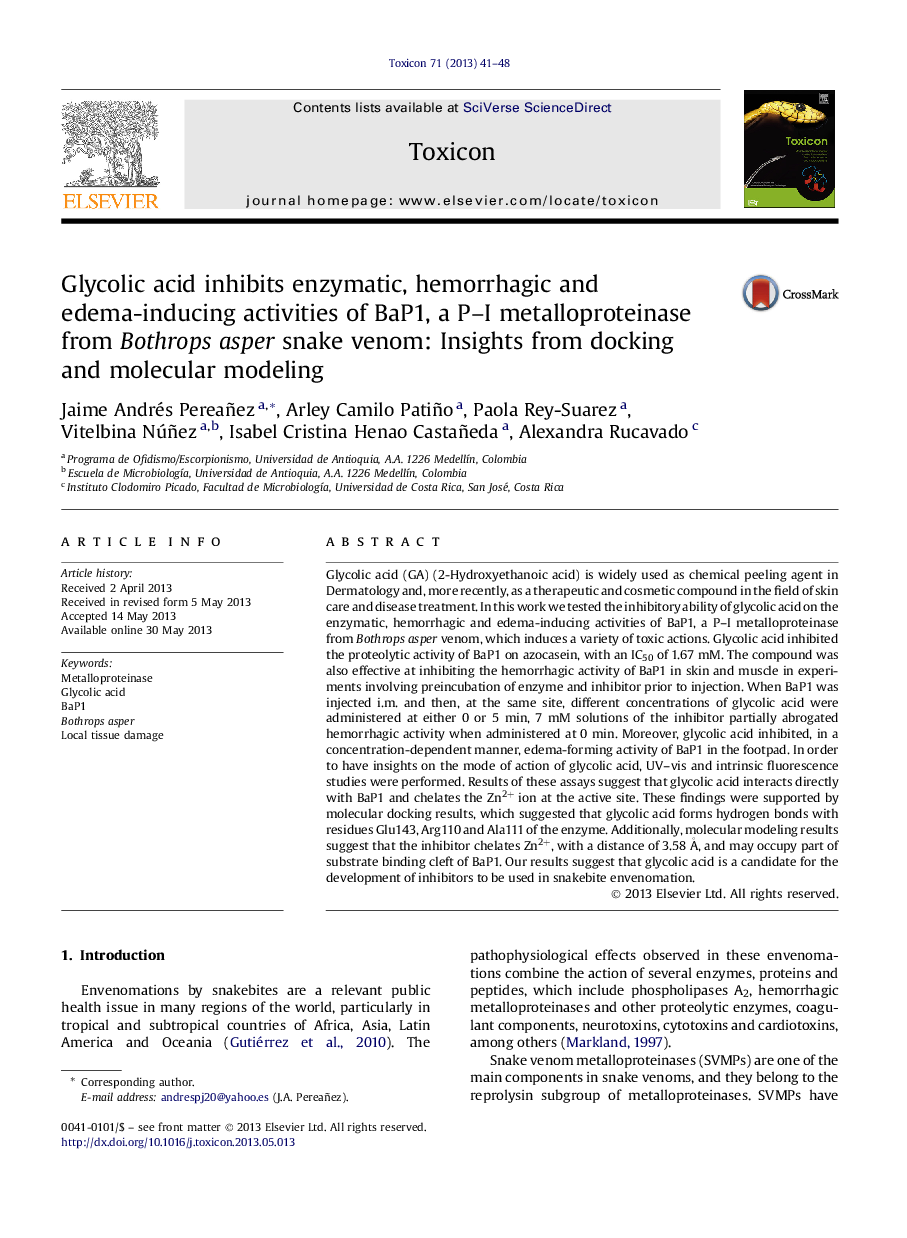| Article ID | Journal | Published Year | Pages | File Type |
|---|---|---|---|---|
| 8397490 | Toxicon | 2013 | 8 Pages |
Abstract
Glycolic acid (GA) (2-Hydroxyethanoic acid) is widely used as chemical peeling agent in Dermatology and, more recently, as a therapeutic and cosmetic compound in the field of skin care and disease treatment. In this work we tested the inhibitory ability of glycolic acid on the enzymatic, hemorrhagic and edema-inducing activities of BaP1, a P-I metalloproteinase from Bothrops asper venom, which induces a variety of toxic actions. Glycolic acid inhibited the proteolytic activity of BaP1 on azocasein, with an IC50 of 1.67Â mM. The compound was also effective at inhibiting the hemorrhagic activity of BaP1 in skin and muscle in experiments involving preincubation of enzyme and inhibitor prior to injection. When BaP1 was injected i.m. and then, at the same site, different concentrations of glycolic acid were administered at either 0 or 5Â min, 7Â mM solutions of the inhibitor partially abrogated hemorrhagic activity when administered at 0Â min. Moreover, glycolic acid inhibited, in a concentration-dependent manner, edema-forming activity of BaP1 in the footpad. In order to have insights on the mode of action of glycolic acid, UV-vis and intrinsic fluorescence studies were performed. Results of these assays suggest that glycolic acid interacts directly with BaP1 and chelates the Zn2+ ion at the active site. These findings were supported by molecular docking results, which suggested that glycolic acid forms hydrogen bonds with residues Glu143, Arg110 and Ala111 of the enzyme. Additionally, molecular modeling results suggest that the inhibitor chelates Zn2+, with a distance of 3.58Â Ã
, and may occupy part of substrate binding cleft of BaP1. Our results suggest that glycolic acid is a candidate for the development of inhibitors to be used in snakebite envenomation.
Related Topics
Life Sciences
Biochemistry, Genetics and Molecular Biology
Biochemistry, Genetics and Molecular Biology (General)
Authors
Jaime Andrés Pereañez, Arley Camilo Patiño, Paola Rey-Suarez, Vitelbina Núñez, Isabel Cristina Henao Castañeda, Alexandra Rucavado,
